Lady Jane Grey, known as the “Nine-Day Queen,” has captured the fascination of historians and the public alike for centuries. Her brief and tragic reign over England, lasting only nine days in 1553, ended with her execution after being used as a political pawn. Despite her significance in English history, for over 400 years, there has been no confirmed portrait of Lady Jane Grey painted during her lifetime. However, recent research and a groundbreaking discovery at Wrest Park in England may finally reveal the only known portrait of the doomed queen, offering new insights into her legacy.
The Short Reign of Lady Jane Grey: A Pawn in Tudor Ambitions
Lady Jane Grey was born around 1537, the great-niece of Henry VIII, and in 1553, she found herself thrust onto the throne under tragic circumstances. With the death of King Edward VI, the son of Henry VIII, Jane was named as his successor in a bid by some Protestant factions to prevent the Catholic Mary Tudor from ascending the throne. Jane’s reign was brief, lasting just nine days, as Mary I quickly rallied support and claimed the crown. Jane was imprisoned and executed for treason in 1554, her fate sealed by the political ambitions of others.

For centuries, Jane has been remembered as an innocent victim in the ruthless politics of the Tudor court. Her image, however, has mostly been shaped by paintings created long after her death. None of the portraits attributed to her were created during her lifetime, until now, possibly with the discovery of a portrait at Wrest Park.
Video
Watch the documentary The Tragedy of Lady Jane Grey: Facial Reconstructions & Historical Insight to uncover the story of England’s tragic queen.
The Discovery of the Portrait: An Unidentified Woman in Black
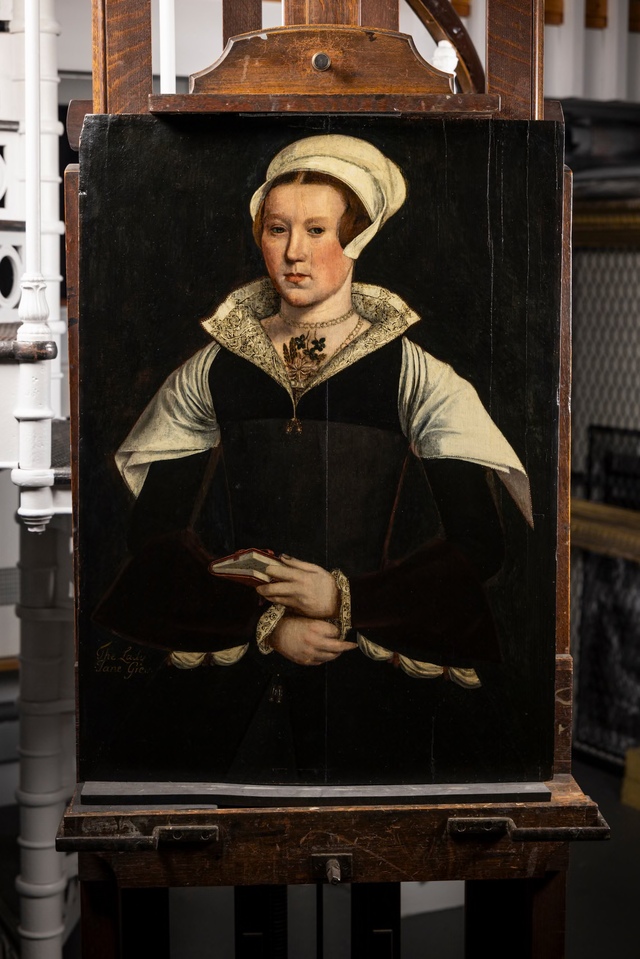
This mysterious portrait, recently displayed at Wrest Park, an 18th-century mansion in England, depicts a young woman in an elegant black dress, with striking similarities to Jane Grey. The portrait had been part of the historic collection at Wrest Park for over 300 years, believed to be a representation of the ill-fated queen. However, its authenticity was thrown into doubt in recent decades, and its identification had long been questioned.
Now, English Heritage, along with experts from the Courtauld Institute of Art and dendrochronologist Ian Tyers, have conducted a new analysis of the painting. Their findings suggest that the portrait may indeed be the only known image of Lady Jane Grey created during her lifetime, or at least shortly before her execution. The portrait provides a rare glimpse into the young queen’s life and reign, raising new questions about how she was perceived during her brief time in power.

New Research: The Case for Lady Jane Grey
The research conducted on the painting included several advanced techniques, including dendrochronology, X-ray fluorescence spectroscopy, and infrared reflectography. Dendrochronology, or tree-ring dating, helped determine that the painting was created between 1539 and around 1571, which coincides with the period of Lady Jane’s life. This alone makes the painting a potential candidate for depicting Jane, as it falls within the timeframe of her reign.
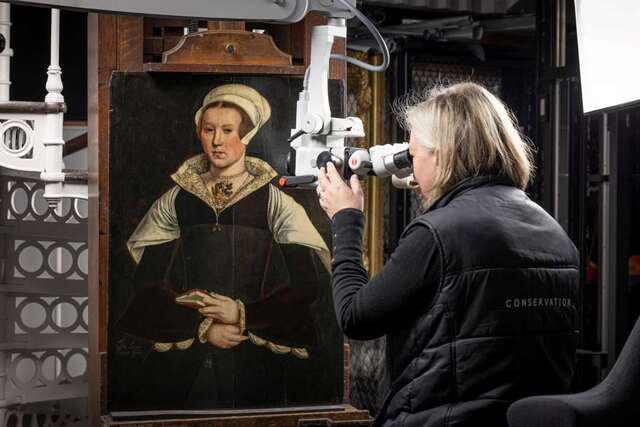
Infrared reflectography also revealed fascinating details beneath the surface of the painting. Changes were made to the sitter’s clothing, particularly the sleeves and coif, which had been altered after the initial completion of the portrait. The presence of a white scarf added to the sitter’s shoulders also suggests modifications were made to the original image, possibly after her death. These alterations could have been made to transform the portrait into a more subdued, martyr-like image of Jane Grey, reflecting her role as a Protestant icon after her execution.
Alterations to the Portrait: A Subdued Royal Image
One of the most striking findings is the deliberate alteration of the sitter’s facial features. The eyes, which originally looked to the right, had been changed to look left. The mouth, ears, and eyes were scratched out, a likely iconoclastic attack that was common in the turbulent period following the Reformation. These attacks on portraits were often politically or religiously motivated, with figures such as Lady Jane Grey, associated with religious reform, being subjected to such defacement.
The changes to the costume and the iconoclastic alterations further suggest that the portrait was transformed after Jane’s death. What may have originally been a more royal and elaborate image of Jane Grey was later altered to reflect her martyrdom, emphasizing her association with Protestantism and her tragic death at the hands of the Catholic queen, Mary I.
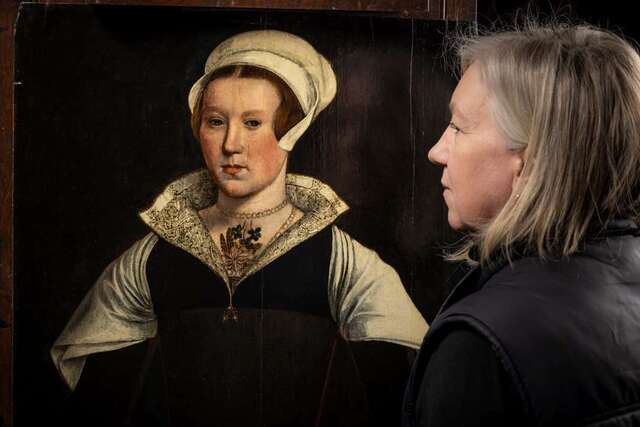
Compelling Evidence and Historical Context
Despite these alterations, the painting’s original characteristics align with known depictions of Lady Jane Grey, particularly her youthful features and the elegant black dress, which was typical of the period. Researchers also noted that the shape of the coif and the delicately depicted stitching around the head suggested that it may have been part of a more formal and elaborate outfit, which would have been in line with the attire worn by Lady Jane in other depictions.
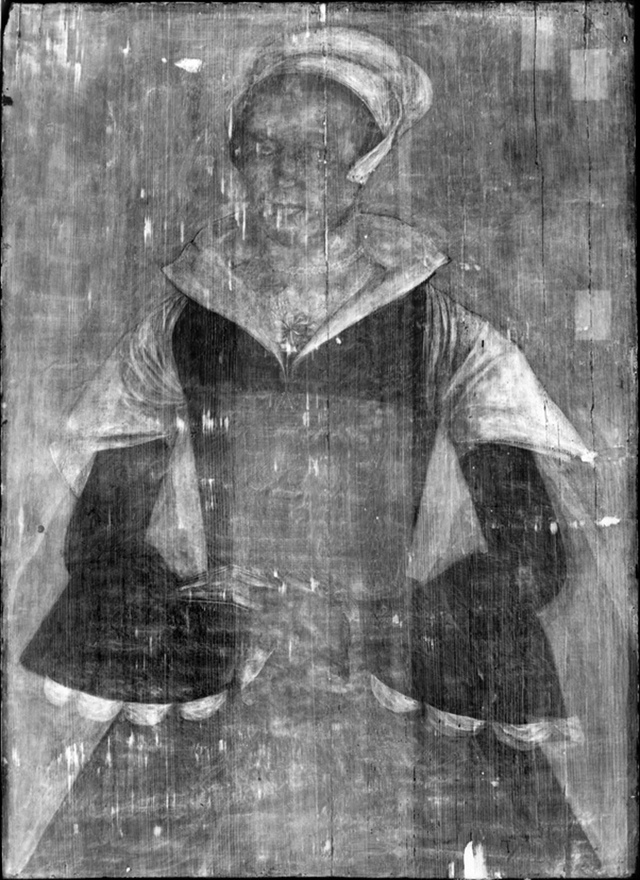
The evidence from dendrochronology, infrared imaging, and the historical context surrounding the painting provides a compelling argument that this could indeed be a portrait of Lady Jane Grey. The addition of a white scarf, the alterations to the costume, and the scratching out of the facial features all point to a purposeful effort to create an image of the queen after her death—one that transformed her from a young royal into a Protestant martyr.
Controversy and Disagreement: Alternative Theories
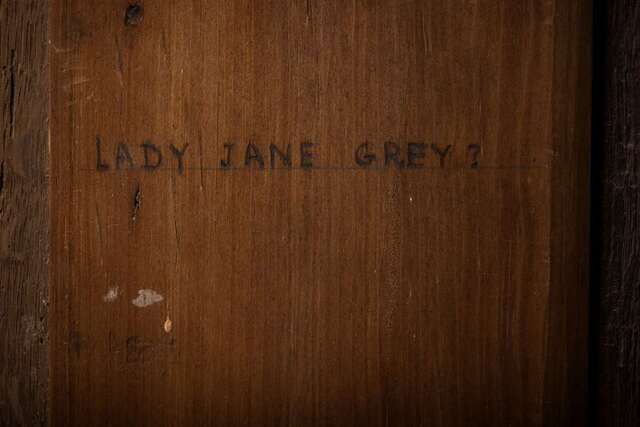
Despite the convincing evidence, not all experts are convinced that the portrait depicts Lady Jane Grey. Independent researcher J. Stephan Edwards, who specializes in Grey’s life and portraits of the queen, remains skeptical. He suggests that the portrait may actually represent Mary Neville Fiennes, Lady Dacre, another prominent figure of the time. According to Edwards, the dendrochronological findings do not provide enough evidence to definitively identify the sitter as Lady Jane Grey.
This controversy highlights the ongoing debates among historians and art historians regarding the identification of historical figures in portraits. While the evidence supporting the identification of the painting as Lady Jane Grey is strong, there are still unanswered questions, and alternative theories continue to circulate.
The Role of Historical Art in Shaping Lady Jane Grey’s Legacy
The discovery of a portrait that may depict Lady Jane Grey offers a new perspective on her legacy. For centuries, Lady Jane has been portrayed as a helpless victim in the traditional image of her execution, famously painted by Paul Delaroche in 1833. In that depiction, Jane is blindfolded and stands before the execution block, a helpless young woman facing an unjust death.
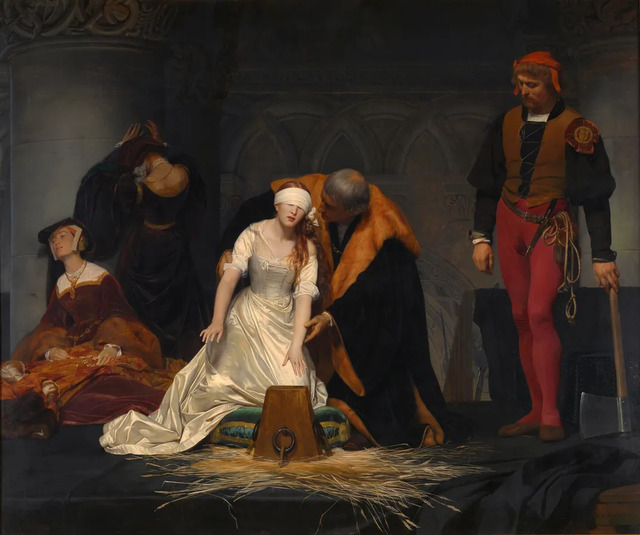
However, the potential portrait at Wrest Park presents a different image—a powerful and dignified woman, not merely a victim, but a figure of character and strength. If this painting is indeed of Lady Jane Grey, it challenges the traditional portrayal of her as a blindfolded martyr, offering a more nuanced representation of her life and reign. It paints Jane not just as a victim of political machinations but as a woman of remarkable courage, who faced death with dignity.
Video
Watch the video This Painfully Beautiful Painting Will Leave You Unsettled to experience the emotional impact of a truly striking artwork.
Conclusion: A New Addition to Lady Jane Grey’s Story
Whether or not the portrait at Wrest Park is definitively identified as Lady Jane Grey, the research surrounding its discovery offers valuable insights into her life and legacy. It provides a rare glimpse into the image of a young woman who was thrust into a position of immense political significance and who, despite her tragic end, continues to capture the imagination of history enthusiasts and scholars alike.
The portrait, if confirmed, would not only be the only known depiction of Lady Jane Grey painted during her lifetime but also a powerful addition to our understanding of her story—a story that, for centuries, has been overshadowed by her tragic execution. It serves as a reminder of the complexity of historical narratives and the power of art to shape our understanding of the past.



